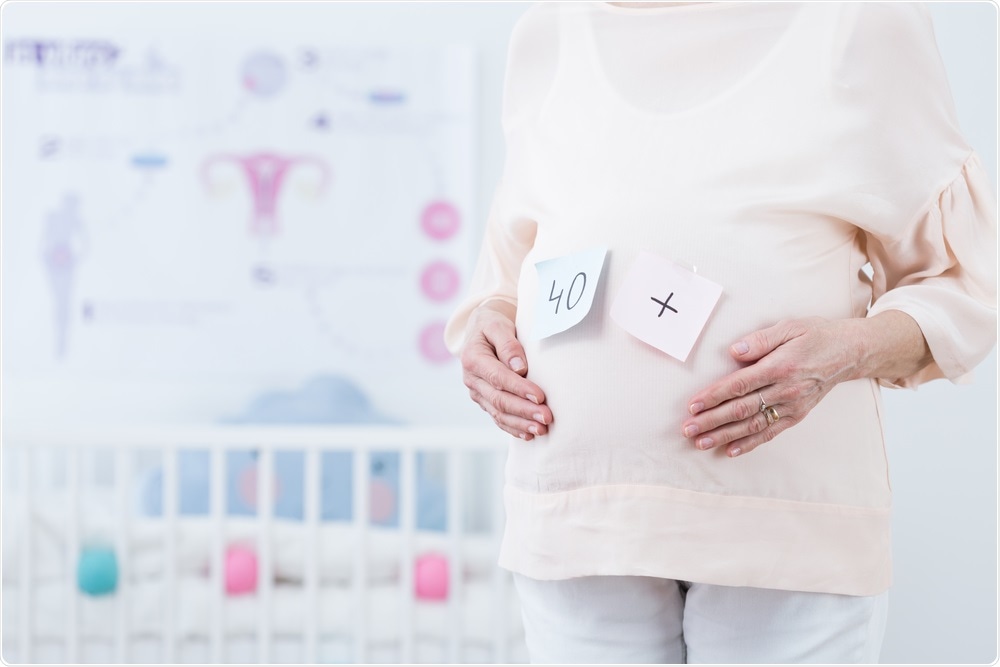
Maternal age has no effect on IVF success, conclude researchers
Researchers have shown that maternal age may not influence the implantation potential of embryos in IVF or the likelihood of miscarriage. The study concludes that whilst older women produce fewer euploid (healthy) embryos, age does not affect implantation or live birth rates, if healthy, high-quality embryos are used.
 Photographee | Shutterstock
Photographee | ShutterstockThere have been several studies that suggest that age causes a decline in the reproductive potential for women. This has mainly been attributed to the decrease in the yield of oocytes (eggs) and an increase in aneuploidy (embryos that have less or more than the requisite number of chromosomes).
According to research, the rates of aneuploidy steadily increase after 30 and reach 88.2% by the age of 44 years. However, as other studies suggest that the reduction in reproductive potential may also be caused by lower implantation potential or the ability of the embryo to implant in the uterus of older women.
Potential flaws in the IVF procedure for older women
Embryo biopsy is a procedure that is carried out during in vitro fertilization (IVF), where one or two cells are removed from a growing embryo and tested for abnormalities, before implantation.
However, such repeated biopsies to analyze the cells at different stages (first polar body, second polar body, and blastomere) can reduce the viability of the embryo. Indeed, one of the limitations of previous research was that the studies included embryos that had undergone one, two, three biopsies and no adjustment was made to the results for the number of biopsies performed.
To address these concerns, the present study sought to determine if there was an influence of the maternal age on the implantation potential of blastocysts (an embryo that has developed for 5–6 days).
The study was retrospectively performed in a multi-center where 785 frozen embryo transfer cycles were performed and 870 blastocysts were transferred. The blastocysts were divided into four classes: excellent, good, average, and poor.
These were typically harvested at day 5; however, in some cases, the delayed embryos were harvested at day 6. These embryos were immobilized, 3–7 cells were removed for analyses and genetic screening before testing the implantation potential.
The age of the women was divided into four groups: <35 yrs, 35–37 years, 38–40 years, and 41–42 years.
Blastocysts that were of excellent quality were associated with a significantly higher live birth rate compared with the good quality embryos (79% vs 64%). Poor quality embryos had a live birth rate of 28%, a substantial difference.
Similarly, the excellent quality embryos were associated with higher implantation rate and lower spontaneous abortion rate compared to the average and poor-quality embryos.
No difference in implantation potential
Interestingly, the study found that there was no difference in the implantation potential of euploid embryos or the embryos that contain a normal number of chromosomes from the women of different age groups (<35 yrs, 35–37 years, 38–40 years, and 41–42 years). The shape, structure, and growth of euploid embryos were also comparable between different age groups.
Thus, although the older women had a fewer number of euploid or embryos with normal chromosome numbers, there was no difference in the potential of the euploid embryo in terms of how they implanted in the embryo, grew, and resulted in a live birth.
The research findings are in contrast to previous studies which suggest that apart from the changes in chromosome number, the potential of embryos to implant in the uterus also declines with age.
Source:
Does maternal age at retrieval influence the implantation potential of euploid blastocysts? April 2019. American Journal of Obstetrics and Gynecology. 220(4) pp. 379.e1-379.e7 American Journal of Obstetrics and Gynecology. doi.org/10.1016/j.ajog.2018.11.1103

No comments:
Post a Comment